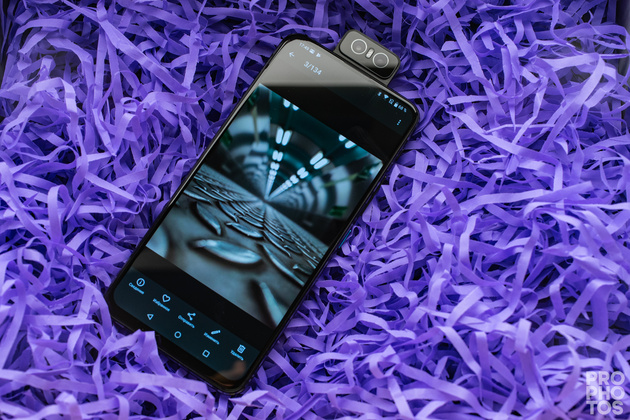Acquaintance, comparison of characteristics
The fall of 2018 can be safely called a turning point in the world of photography. It would seem that a purely technological step - the release of full-frame mirrorless cameras by the main market players - has become a key point in the development of the photo industry. Even the most conservative brands threw off “mirror” mounts, as well as many technological limitations, like an old skin. It is from this point of view that I urge to consider what is happening: now, without exception, all photographers have switched to a new platform that allows photography to move to the next level.NIKON Z 6 Installations: ISO 100, F8, 1/250 s, 85.0 mm equiv.Download RAW
In this big test, we will study in detail two Nikon mirrorless innovations - the Z6 and Z7 models , take photos and videos on them, and talk about the features of the system. We were lucky to be one of the first who not only met these cameras, but also personally saw the process of their manufacture.
Now that the emotions from the announcement of new products have subsided, it's time to put on the shelves everything we managed to learn during a two-week acquaintance with the most modern Nikon.
What is the difference between Nikon Z6 and Nikon Z7?
Having before his eyes the experience of other manufacturers, Nikon went on a proven path: he released two cameras at once with slightly different characteristics and price. At the same time, company representatives do not hide: the cameras are very unified, that is, they are extremely similar both externally and internally. Get the price of Nikon Z6 / Nikon Z7 Differences in the matrix, electronic filling and logo on the case.NIKON Z 7 / NIKKOR Z 24-70mm f / 4 S Settings: ISO 100, F8, 1/320 s, 24.0 mm equiv.Download RAW
The matrix determines the scope of each of the models. So, in the top Nikon Z7 there is a full-frame sensor with a resolution of 45.7 megapixels, extremely similar to the sensor from Nikon D850, which is not surprising. In Nikon Z7, everything is fine, except for the price (259,990 rubles per body for the Russian market at the start of sales) and a slightly reduced rate of fire. Therefore, a pair of the top camera is more “modest” (159 990 rubles) Nikon Z6 with a matrix of 24.5 megapixels.
Such a resolution causes a higher speed and a more affordable price, which is no less important! We decided to put together the main characteristics of both models in a summary table so that their similarities and differences are more obvious. During the test, we will also measure the buffer volume of each of the cameras - there will also be slight differences.
NIKON Z 7 / NIKKOR Z 24-70mm f / 4 S Settings: ISO 100, F4, 1/500 s, 70.0 mm equiv.Download RAW
| Nikon Z6 | Nikon Z7 | |
| Matrix Resolution | 24.5 megapixels | 45.7 megapixels |
| Maximum image size | 6048 × 4024 | 8256 × 5504 |
| Burst shooting | Up to 12 frames / s | Up to 9 frames / s |
| ISO sensitivity range | 100–51,200 expandable to 50–204,800 | 64–25,600 expandable to 32–102,400 |
| Matrix Phase AF Sensors | 273, 90% coverage vertically and horizontally | 493, coverage 90% vertically and horizontally |
| Stabilization | Five axes based on matrix shift | Five axes based on matrix shift |
| Minimum shutter speed | 1/8000 s | 1/8000 s |
| Possibility of shooting with electronic shutter | Yes | Yes |
| Claimed shutter life | 200 000 frames | 200 000 frames |
| Sync speed | 1/200 s | 1/200 s |
| Maximum video resolution | Up to 3840 × 2160, 30p | Up to 3840 × 2160, 30p |
| Wireless interfaces | Wi-Fi, Bluetooth | Wi-Fi, Bluetooth |
| Memory card slot | Xqd | Xqd |
| Display | 3.2 ? tilt-sensitive touch with a resolution of 2.1 million pixels | 3.2 ? tilt-sensitive touch with a resolution of 2.1 million pixels |
| Viewfinder | OLED, 3.69 million points | OLED, 3.69 million points |
| Battery | EN-EL15b (1900 mAh, 7 V) | EN-EL15b (1900 mAh, 7 V) |
| CIPA Battery Life | 330 frames | 330 frames |
| Weight with battery and memory card | 675 g | 675 g |
Z mount
The transition to mirrorless camera technology inevitably led to the development of the new Z mount. The Nikon F mount, which has existed for almost 60 years, is not going away. Representatives of the company at a press conference assured that it will continue to be supported, and the production of new lenses will continue. In addition, the Nikon FTZ adapter allows the use of F optics on Z-cameras. Already on the example of Nikon Z6 and Z7, we see that the new bayonet has advantages, and they are undeniable.
Handheld shot with stabilizer
NIKON Z 7 / NIKKOR Z 35mm f / 1.8 S Settings: ISO 400, F3.5, 1/4 s, 35.0 mm equiv.Download RAW
Shooting Using the Nikon FTZ Adapter
NIKON Z 7 / 85.0 mm f / 1.4 Installations: ISO 64, F1.4, 1/8000 s, 85.0 mm equiv.Download RAW


